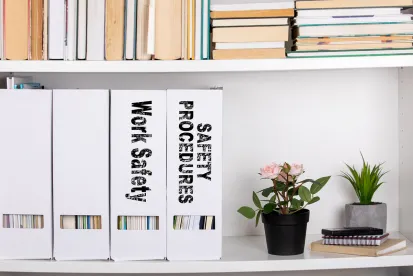On December 16, 2021, Cal/OSHA’s Standards Board voted to readopt the Cal/OSHA COVID-19 Emergency Temporary Standards (ETS) with several revisions. This amended readoption of the ETS will go into effect on January 14, 2022, and will remain in place until April 14, 2022. Only one member of the seven-person Standards Board voted against it.
This vote comes on the heels of the California Department of Public Health (CDPH) issuing a state-wide face-covering requirement for indoor public settings and in the wake of uncertainty about the future of the federal COVID-19 Emergency Temporary Standards (federal ETS).
Cal/OSHA had released its proposed changes to the ETS for readoption in October 2021 but delayed the vote. With the expiration of the current version coming in January, however, they could not wait any longer. Prior to voting, the Board confirmed with staff that updated FAQs were already in development, though no date was provided for when they would be published.
Here is an overview of some of the significant changes:
Face Coverings
Though state and local guidance regarding face coverings has fluctuated since June 2021, the ETS guidance will remain mostly the same.
Notably, cloth face coverings must now pass the “light test.” To qualify as a face covering under the revised ETS, a cloth face covering may not let light pass through it when held up to a light source.
Additionally, both vaccinated and unvaccinated employees must wear face-coverings during screening.
Exclusion from Worksite
Consistent with the current ETS, employers must still exclude employees who are positive for COVID-19 until return-to-work requirements are met. Employers also must exclude employees who have had close contact with a positive individual unless the employee is fully vaccinated and asymptomatic.
Under the current version of the ETS, employees who have a close contact but are fully vaccinated and remain asymptomatic don’t need to be excluded from the workplace. Effective January 14, 2022, these employees must now wear a face-covering in the workplace for 14 days and maintain social distance for 14 days.
Return-to-Work Criteria
Under this new readoption, persons who had close contact, but never developed COVID-19 symptoms may return to work after 14 days have passed since the last known close contact. However, the employee who had the close contact is permitted to return early under the following scenarios:
-
10 days after the close contact if the employee wears a face covering and maintains 6 feet of separation from others for 14 days.
-
7 days after the close contact if the person tested negative for COVID-19 using a COVID-19 test with the specimen taken at least five days after the last known close contact; and the person wears a face covering and maintains six feet of distance from others while at the workplace for 14 days following the last date of close contact.
The return-to-work criteria for COVID-19 cases with and without symptoms and close contacts who develop symptoms remain unchanged.
The readoption also removes the return-to-work exemptions for essential critical infrastructure during staffing shortages.
Outbreaks and Testing
Under the June 2021 version of the ETS, employers are not required to provide COVID-19 testing to fully vaccinated, asymptomatic employees who have come into close contact with a COVID-19 positive individual or in an outbreak setting. An outbreak under the ETS is defined as three or more employees testing positive for COVID-19 within an exposed group during a 14-day period.
This newest version of the ETS removes this distinction between vaccinated and unvaccinated employees with respect to testing. Under the amended version of the ETS, employers must also make COVID-19 testing available at no cost, during paid time, to fully vaccinated, asymptomatic employees who have had close contact or during an outbreak.





 />i
/>i
